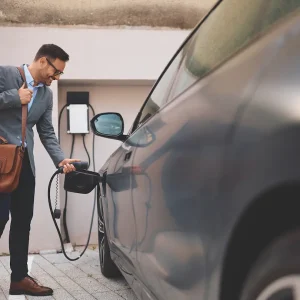Following the publication of the UK Government’s electric vehicle infrastructure strategy there are seeds of hope for companies who wish to adopt cleaner fleets, yet currently face a postcode lottery on charging costs. The strategy assures greater cohesion between the government and local authorities to provide more geographically disparate, reliable charging points with standardised payment methods. This means fleet drivers, who rely heavily on local on-route charging infrastructure as they pass through different areas while working, have reason for confidence. Ministers need to revisit the figures regarding the number of proposed chargepoints, however, which as they stand are woefully inadequate.
Funding and expert support
The £500m local infrastructure support programme, which is designed to help deploy local chargepoints at scale across the country, will really help meet the diversity of fleet needs. Of course, the funds will help unlock financial barriers to deployment, but the support programme is just as vital. After all, under-resourced local authorities are being asked to take on a gargantuan task in redeveloping the fundamental way their local transport infrastructure works. There is no point throwing cash at a problem without knowing where to spend it. The essential support will direct expertise to local authorities and be a massive help in ensuring those authorities grasp what charging points are needed where and consider not just local residents, but the time pressed, transient fleet sector which will be relying on their charging points too.
This support which will help decentralised EV planning and implementation will please UK motorists, 43% of which back local authorities being responsible for planning and delivering EV infrastructure [according to Venson research].
Rollout must accelerate to meet business drivers’ needs
Our recent white paper, ‘Living with Your Electric Vehicle’ discussed the fact that the reliability of motorway charging points is sketchy, at best. So, the £950m Rapid Charging Fund investment designed to rollout high-powered chargers across the strategic network is very welcome. Considering that fleets comprise over half of new cars sold across the UK, however, the promise of six high-powered charge points at each motorway service station by the end of next year barely scratches the surface, so may do little to reassure in the short term or aid fleet transition to electrification.
What’s more, the widely publicised figure of 300,000 chargepoints in place by 2030 is, as admitted by the government in its own strategy report, a minimum. It appears that this figure is based on the (misguided) assumption that people will adopt regular workplace charging and lower their average mileage. However, while the government says this figure is in-line with recent findings, we would urge decision-makers to double this goal to help fleets transition to electrification. Fleet drivers are often on the road and cannot afford the time to charge at the workplace, meanwhile, human nature dictates that people will stay longer at chargepoints then needed. If people drive more and charge their vehicles inefficiently, the actual number of chargepoints needed will be at least 600,000.
Greater transparency, increased confidence
Despite concern over the speed of rollout, there is more good news. The fact that the Government electric vehicle strategy is promising transparent pricing and simpler payment methods, as well as open chargepoint data to enable drivers to locate the right chargepoints for their needs, will be music to the ears of harried fleet drivers. According to figures obtained by British Gas, 21 councils across England and Wales currently allow motorists to top up their batteries for free, yet in other areas drivers are charged up to £4 per kilowatt hour (kWh). Giving fleets like this a clear, mandated payment metric so they can compare prices across different charging networks and access to informative geographical data which will help them in locating the right ones for their needs will do much to increase conviction in the EV network.
So, it’s clear that there are glimmers of hope in the government’s electric vehicle strategy which is reassuring of course. However, the government claims that getting fleets to adopt electric vehicles is vital, in order to get more used vehicles into the second-hand market. However, it needs to put its foot on the throttle to demonstrate that it actually means it. By targeting the bare minimum of charge points by 2030, it is not being realistic and risks stalling fleet procurement of electric vehicles.





